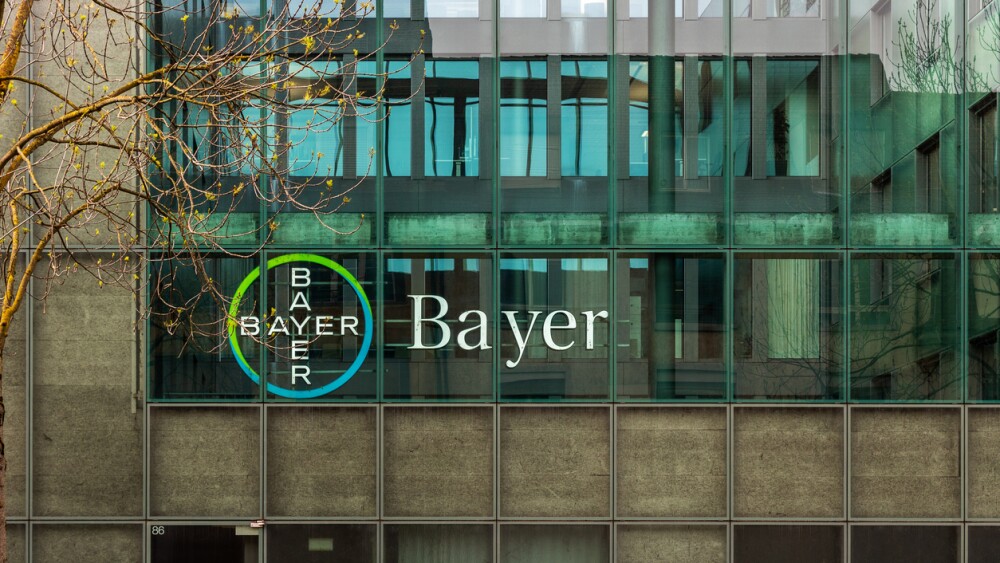After revoking Sarepta’s award in July and awarding one to Krystal last month, the FDA’s platform technology designation program appears to be back on track. These six biotechs could be on the regulator’s radar.
Rolled out earlier this year, the FDA’s Platform Technology Designation program got off to a rocky start—with the first-ever award rescinded weeks after its announcement.
Hailed as a “critical shift” for gene therapy, a platform technology is defined as a “well-understood and reproducible” method that is “essential to the structure or function” of a drug product, according to a draft guidance dated May 2024. Such platforms should also be applicable and adaptable to other drugs, allowing for a “standardized production or manufacturing process,” according to the FDA.
Nucleic acid sequences and vectors could potentially fit under this definition, the FDA said at the time, as well as broader technologies such as a particular delivery method or mechanism of action.
Importantly, aside from satisfying the above definition, companies seeking to qualify for such a platform technology award must also first secure regulatory approval for a product that uses the technology.
Such was the case in June this year, when the FDA deemed Sarepta Therapeutics’ adeno-associated virus (AAV) vector technology deserving of the award. Sarepta’s delivery platform underpins its gene therapy Elevidys, which won the regulator’s full approval in June 2024 for Duchenne muscular dystrophy. At the time the platform designation was given, analysts lauded the award, with William Blair saying it would help the company “accelerate the development of its follow-on gene therapy programs.”
Just a few weeks later, however, the FDA revoked the designation, citing the three patient deaths linked to Sarepta’s platform.
The regulator tried again a few months later, granting Krystal Biotech the second-ever designation in October for the biotech’s modified herpes simplex virus (HSV) vector used in its gene therapy gel Vyjuvek, indicated for dystrophic epidermolysis bullosa.
And while Krystal’s designation puts the program back on track, it also raises key questions. In an interview with BioSpace last month, William Blair’s Sami Corwin said the biotech is using its HSV platform for KB801, being developed for the rare eye disease neurotropic keratitis. Unlike Vyjuvek, however, KB801 is formulated as an eye drop, which, according to Corwin, could muddy the applicability of Krystal’s technology between these two assets.
“Krystal is interesting because [KB801] uses the same HSV [vector] but the route of administration is totally different,” she said.
Outstanding uncertainties aside, BioSpace looks at other companies that could qualify for the award, paying particular focus to gene therapy developers with promising assets for rare diseases.
Avidity Takes RNA to the Next Stage With Antibody-Oligonucleotide Conjugates
Avidity Biosciences is using a complex biologic construct to push the boundaries of RNA medicine, an endeavor intriguing enough that Novartis scooped the whole company up for $12 billion.
Dubbed antibody-oligonucleotide conjugates (AOCs), these constructs consist of a monoclonal antibody, a linker and a short nucleotide, according to the biotech’s website. The antibody serves to home in on a particular target, while the oligonucleotide, often an siRNA, is the therapeutic.
Avidity’s AOC technology has yet to yield a drug approval—a requirement of the FDA’s platform designation—but is nevertheless promising enough to form the foundation of the Novartis takeover. In a statement at the time of the deal, Novartis CEO Vas Narasimhan called Avidity’s platform “pioneering,” adding that it is an approach that yields the “industry-leading delivery of RNA therapeutics to muscle tissue.”
One asset yielded by this AOC platform is del-zota, which doesn’t carry a siRNA molecule but is instead based on a phosphorodiamidate morpholino oligomers (PMO), a short single strand of DNA that bind to a target mRNA, in turn modulating gene expression. Avidity is testing del-zota for Duchenne muscular dystrophy (DMD) and last month held a meeting with the FDA in preparation for a biologics license application early next year.
Also using the AOC technology are del-desiran, for myotonic dystrophy type 1 (DM1), and del-brax, for facioscapulohumeral muscular dystrophy. Both molecules are also moving toward registration: del-desiran enrolled its first Phase III patient in July, while in June, the biotech announced that an accelerated pathway for del-brax is open.
Dyne Emerges as a FORCE in Neuromuscular Space
Also working on rare neuromuscular disorders is Dyne Therapeutics.
However, Dyne’s FORCE platform could potentially allow for more payload flexibility than Avidity’s. Dyne’s constructs can similarly be used to deliver therapeutic nucleotides—PMOs, for instance, as well as antisense oligonucleotides (ASO)—but also entire proteins. One of Dyne’s preclinical assets, DYNE-401, is loaded with the GAA enzyme and is being tested as a replacement therapy for Pompe disease, a rare muscle wasting disorder.
Aside from DYNE-401, the Massachusetts-based biotech is working on zeleciment basivarsen, currently in Phase I/II studies, which uses an ASO payload to knock down the DMPK gene. Data released in May 2024 showed the drug led to improvements in muscle function in patients with DM1, a benefit it was able to sustain through 1 year of follow-up.
Dyne is also working on zeleciment rostudirsen, which carries a PMO that targets the dystrophin gene’s exon 51 to promote the expression of a functional protein, for DMD. Dyne’s exon 51 program is in Phase I/II development, though the biotech is working on a broader DMD franchise with zeleciment rostudirsen, looking to target exons 44, 45 and 53, among other disease-causing exons.
The FORCE platform is also still without an FDA approval.
CRISPR’s Gene Editing Platform Validated By Casgevy
CRISPR Therapeutics’ drug development engine has already crossed the finish line: the gene-edited cell therapy Casgevy was approved for sickle cell disease in December 2023 and for beta-thalassemia a month later.
Though Casgevy was developed in cooperation with Vertex Pharmaceuticals under a December 2017 contract, the drug has its roots in CRISPR’s labs. Casgevy works by first harvesting a patient’s own stem cells, which are then edited using CRISPR/Cas9 to restore expression of the fetal hemoglobin and, in turn, promote red blood cell health.
Leveraging the same platform technology that yielded Casgevy, CRISPR is now working on a suite of similar treatments, including the CAR T cell therapies CTX112 and CTX131. The former is designed to target the CD19 biomarker, while the latter seeks out CD70.
In a business report in August, CRISPR said CTX112 demonstrated “encouraging” Phase I/II results in relapsed or refractory follicular lymphoma and marginal zone lymphoma, though the biotech did not provide specific data. CTX131, meanwhile, is being tested for both solid tumors and hematologic malignancies.
CTX112 is also in early-stage development for autoimmune diseases, including inflammatory myositis, systemic sclerosis and systemic lupus erythematosus. For its immune development, CRISPR plans to use pharmacokinetic, pharmacodynamic and safety data from CTX112’s cancer programs.
Beam’s Base Editors Make Edits Inside the Body
Likewise looking to edit out disease-causing mutations is Beam Therapeutics, which also uses CRISPR for its platform.
To set itself apart, however, Beam’s editing directly changes individual nucleotides, without the cutting-and-replacing of mutated sequences often done with CRISPR editing. Such an approach, according to the biotech, avoids unintended effects from CRISPR such as unplanned deletions or insertions, or larger genomic rearrangements.
Beam however concedes that the concept, called base editing, is still “emerging.” The company has yet to secure an FDA approval.
In January 2022, Pfizer paid $300 million upfront and pledged up to $1.05 billion in milestones to leverage Beam’s capabilities and develop base editing therapies for liver, muscle and central nervous system diseases. No assets from the Pfizer collaboration have entered the clinic yet.
Beam is also working on BEAM-302 and BEAM-301 in-house, for alpha-1 antitrypsin deficiency and glycogen storage disease 1a, respectively. Both programs are in Phase I/II assessment. Beam said in August this year that it is currently finalizing a final dose for BEAM-302 for pivotal development. Additional clinical data for the drug are expected early next year.
UniQure Champions AAVs With Hemgenix
Like CRISPR, Netherlands-based uniQure has an FDA-approved therapy that could bolster its case for the FDA’s platform technology designation.
In November 2022, uniQure and partner CSL won the regulator’s go-ahead for their gene therapy Hemgenix for hemophilia B. Hemgenix uses a liver-directed adeno-associated virus (AAV) vector to carry a copy of the gene encoding for the human coagulation factor IX, which is deficient in patients with hemophilia B , leading to uncontrolled and potentially life-threatening bleeding.
With that approval in hand, uniQure is now leveraging its AAV platform for AMT-130, its investigational therapy for Huntington’s disease. AMT-130 works by delivering an miRNA molecule to silence the huntingtin gene. Mutated forms of huntingtin accumulate in the brains of patients with Huntington’s disease.
Three-year data from a pivotal Phase I/II trial released in September showed that AMT-130 could slow disease progression by 75% versus external controls—an effect size that Stifel analysts at the time said “clearly exceeded expectations.” The gene therapy also significantly improved functional capacity and disease biomarkers, paving the way for an FDA filing early next year.
Last week, however, uniQure revealed during its third quarter earnings report that the FDA had changed its tune about the submission, saying the regulator “no longer agrees” that Phase I/II data would be “adequate to provide the primary evidence in support of a BLA submission.” A submission timeline for AMT-130 is now “unclear,” according to uniQure.
Rocket’s Promising Platform Hit with Manufacturing, Strategic Setbacks
Rounding out this list is Rocket Pharmaceuticals, which is using a lentiviral vector approach to deliver its gene therapies.
Much like CRISPR’s gene-edited Casgevy, Rocket first harvests a patient’s stem cells, then edits them, allowing the integration and expression of a target gene.
Rocket’s most mature asset, Kresladi, leverages this procedure to deliver a functioning copy of the ITGB2 gene for the treatment of severe leukocyte adhesion deficiency-1 (LAD-1), a rare immune disorder. Pivotal Phase I/II data showed a 100% overall survival rate at 12 months after Kresladi treatment, though the FDA in June 2024 nevertheless denied the therapy approval due to manufacturing concerns.
LAD-1 affects children and manifests as recurrent, aggressive and treatment-unresponsive infections.
Rocket has since been working on a resubmission, though progress appears slow. In its second quarter earnings report in August, the biotech said it is still in talks “with senior leaders and reviewers” at the FDA and expects to refile before the end of the year.
Aside from Kresladi, Rocket is also using its lentiviral platform for mozafancogene autotemcel, also called fanca-cel, which it is proposing for the treatment of Fanconi anemia, a rare blood disorder. Data for this asset are also promising, with a November 2024 paper demonstrating “progressive and sustained genetic correction” in eight of 12 treated patients, leading to biomarker improvements
Last month, however, Rocket decided to withdraw its approval application for fanca-cel due to “business and strategic considerations.” The biotech emphasized that the decision to pull fanca-cel’s filing “does not reflect concerns regarding [its] safety or efficacy profile.”










